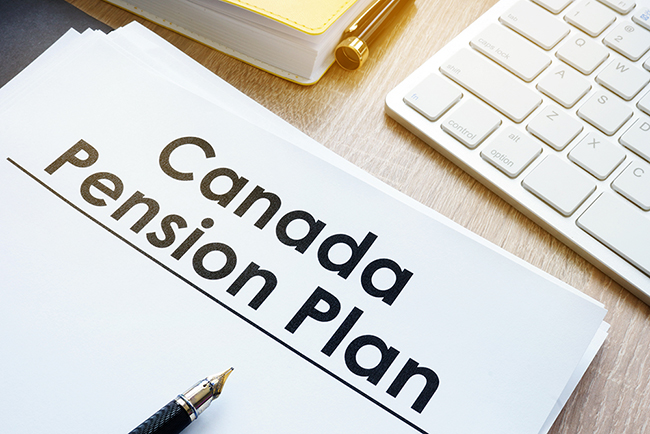Changes to the Canada Pension Plan (CPP) and Old Age Security (OAS) programs have increased the flexibility of those programs and, in particular, have given individuals a greater range of choices with respect to, especially, the timing of their receipt of CPP and OAS. The downside of that increased flexibility has been to make the system — and therefore the choices available to Canadians — more complex. One aspect of that complexity is the (relatively) new CPP post-retirement benefit, or PRB.
The CPP system is a contributory one, in which both the individual and his or her employer make annual contributions, with the amount of those contributions based on the employee’s income for that year. The total of contributions made between the time the individual is age 18 and the time he or she begins receiving CPP retirement benefits is used to calculate the amount of the monthly CPP retirement benefit to which that individual is entitled. An individual can begin receiving his or her CPP retirement benefit at the age of 60 or can defer receipt anytime until he or she turns 70 years of age. With each month that receipt of the benefit is deferred, the amount of that benefit increases.
It was once the case that an individual who had decided to begin receiving the CPP retirement benefit was not required (or allowed) to continue contributing to the CPP (even if he or she continued to work) and therefore had no means of increasing the benefit amount. A change made in 2012 altered that rule, such that individuals who continued to work while receiving the CPP retirement benefit could also continue to contribute to the CPP and, as a result, increase the amount of CPP retirement benefit they received each month. That benefit is the CPP post-retirement benefit or PRB.
The rules governing the PRB differ, depending on the age of the taxpayer. In a nutshell, an individual who has chosen to begin receiving the CPP retirement benefit but who continues to work will be subject to the following rules:
- Individuals who are 60 to 65 years of age and continue to work are required to continue making CPP contributions.
- Individuals who are 65 to 70 years of age and continue to work can choose not to make CPP contributions. To stop contributing, such an individual must fill out Form CPT30, Election to Stop Contributing to the Canada Pension Plan, or Revocation of a Prior Election. A copy of that form must be given to the individual’s employer and the original sent to the Canada Revenue Agency (CRA). An individual who has more than one employer must make the same choice (to continue to contribute or to cease contributions) for all employers and must provide a copy of Form CPT30 to each.
A decision to stop contributing can be changed, and contributions resumed, but only one change can be made per calendar year. To make that change, the individual must complete section D of Form CPT30, give one copy of the form to his or her employer, and send the original to the CRA.
- Individuals over the age of 70 and are still working cannot contribute to the CPP.
Overall, the effect of these new rules is that CPP retirement benefit recipients who are still working and under age 65, as well as those who are between 65 and 70 and choose not to opt out, will continue to make contributions to the CPP system and continue therefore to earn new credits under that system. As a result, the amount of retirement benefits which they are entitled to will increase with each year’s contributions.
Where an individual makes CPP contributions while working and receiving CPP retirement benefits, the amount of any CPP post-retirement benefit earned will automatically be calculated by the federal government, and the individual will be advised of any increase in that monthly CPP retirement benefit each year. The PRB will be paid to that individual automatically the year after the contributions are made, effective January 1st of every year. Since the federal government needs information about employer contributions made, the first annual payment of the PRB is usually issued in early April and will include a lump sum payment back to January. Thereafter, the PRB is paid monthly and the PRB amount is added to the individual’s CPP retirement pension and issued as a single payment.
While the rules governing the PRB can seem complex (and certainly the actuarial calculations are), the individual doesn’t have to be concerned with those technical details. For CPP retirement benefit recipients who are under age 65 or over 70, there is no decision to be made. For the former, CPP contributions will be automatically deducted from their paycheques and for the latter, no such contributions are allowed.
Individuals in the middle group — those aged 65 to 70 — will need to decide whether it makes sense, in their individual circumstances, to continue making contributions to the CPP. Some assistance in making that decision is provided on the federal government website at https://www.canada.ca/en/services/benefits/publicpensions/cpp/cpp-post-retirement/benefit-amount.html, which shows the calculations which would apply for individuals of different ages and income levels.
More information on the PRB generally is also available on that website at https://www.canada.ca/en/services/benefits/publicpensions/cpp/cpp-post-retirement.html.
The information presented is only of a general nature, may omit many details and special rules, is current only as of its published date, and accordingly cannot be regarded as legal or tax advice. Please contact our office for more information on this subject and how it pertains to your specific tax or financial situation.

